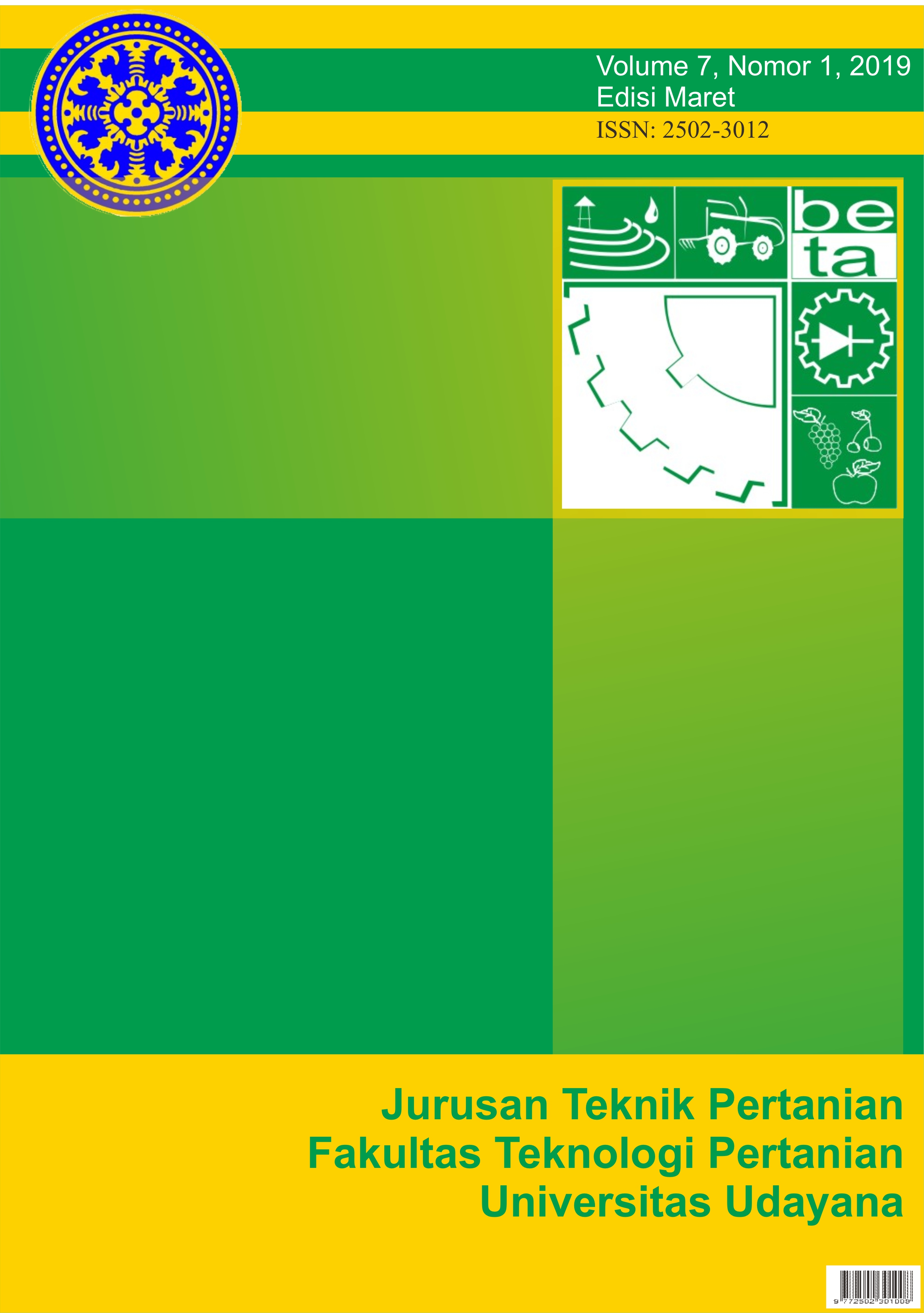Dinamika Suhu Pengomposan Sampah Organik Rumah Tangga dengan Keranjang Bio Komposter
Abstract
Tujuan dari penelitian ini adalah untuk mengetahui kandungan unsur hara makro dan mikro sampah rumah tangga yang divariasikan dengan sekam padi dalam bio komposter atau bioreaktor garden bag. Metode pengomposan dalam penelitian ini menggunakan metode windrow system. Material sampah organik rumah tangga berperan sebagai sumber nitrogen dan sekam padi sebagai sumber karbon atau sebagai bulking agent sehingga C/N ratio bahan baku memenuhi syarat pengomposan.Hasil analisis beberapa parameter material sampah organik rumah tangga dan sekam padi yaitu kadar air (%):76,29 dan 9,48, kadar organik (%): 98,17 dan 77,92, pH: 4,32 dan 6,56, Salinitas (mS/cm): 4,03 dan 0,21, C:N ratio :15,72 dan 112,57, total N (%): 0,87 dan 3,81, kadar lemak (%BB): 13,27 dan 9,48, vitamin C (mg/a00 g): 65,11 dan 92,99 untuk masing-masing bahan. Analisis parameter unsur hara makro dan mikro material sampah organik rumah tangga dan sekam padi menunjukkan bahwa masing-masing bahan baku memenuhi syarat pengomposan. Pada proses pengomposan, suhu diamati dari hari ke-2 sampai hari ke-14. Fase termofilik dicapai pada hari ke-2 yaitu suhu mencapai 43 OC setelah proses aklimasi campuran kedua material. Suhu optimal atau puncak suhu yang dicapai dalam pengomposan sebesar 55OC pada hari 9 ~10 lalu mengalami penurunan suhu dihari selanjutnya, pengamatan dilakukan selama 14 hari untuk melihat dinamika perubahan suhu dari fase termofilik ke fase mesofilik.
The objective of this study was to find the content of macro nutrients and micro household waste which is varied with rice hulls in bio composter or bioreactor garden bag. The windrow system composting method was used in this study. Household organic waste material acted as a source of nitrogen and rice hulls as a carbon source or as a bulking agent so that C:N ratio of material meets the composting requirements. Analysis results of several parameters of household organic waste material and rice hulls i.e. moisture content (%): 76. 29 and 9.48, organic matter (%): 98.17 and 77.92, pH: 4.32 and 6.56, Salinity (mS / cm): 4.03 and 0.21, C: N ratio: 15.72 and 112.57, total N (%): 0.87 and 3.81, fat content (% BB): 13.27 and 9.48, vitamin C (mg / 100 g): 65.11 and 92.99 for each ingredient respectively. Analysis of macro and micro nutrient parameters of organic household waste and rice husk material showed that each material was suitable for composting. The temperature observed from day 2 to day 14. Thermophilic phase was achieved on the 2nd day of composting which the temperature reached 43 OC after the acclimation process. The 55 OC of optimum temperature achieveded on the day 9 ~10 of composting and then decreased the temperature over the next day, the observations made for 14 days to see the dynamics of temperature changes from the thermophilic stage to the mesophilic stage.
Downloads
References
Eriksen, G.N.,F.J.Coale,and G.A. Bollero.1999. Soil Nitrogen Dynamics and Maize Production in Municipal Solid Waste Amended Soil. Agron.J.91:1009-1016
Horisawa, S., Sakuma,Y., Tamai, Y., Doi, Shuichi and Terasawa, M. 2001. Effect of environmental temperature on a small-scale biodegradation system for organic solid waste. The Japan wood Research Society 47:154-158.
Madrini, B., Shibusawa, S., Kojima, Y., and Hosaka, S. 2016. Effect of natural zeolite (clinoptilolite) on ammonia emission of leftover food-rice hulls composting at the initial stage of the thermophilic process.
Pascual, J.A., Garcia, C., Hernandez, T., 1999. Comparison of fresh and composted organic waste in their efficacy for the improvement of arid soil quality. Bioresource Technology. 68, 244-264.
Suller, D.J and Finstein, M.S. 1977. Effect of temperature, aeration and moisture on CO2 formation in bench-scale, continuously thermophilic composting of solid waste. Appl Environ Microbiol 33:345-350.












 Jurnal BETA (Biosistem dan Teknik Pertanian)
Jurnal BETA (Biosistem dan Teknik Pertanian)


